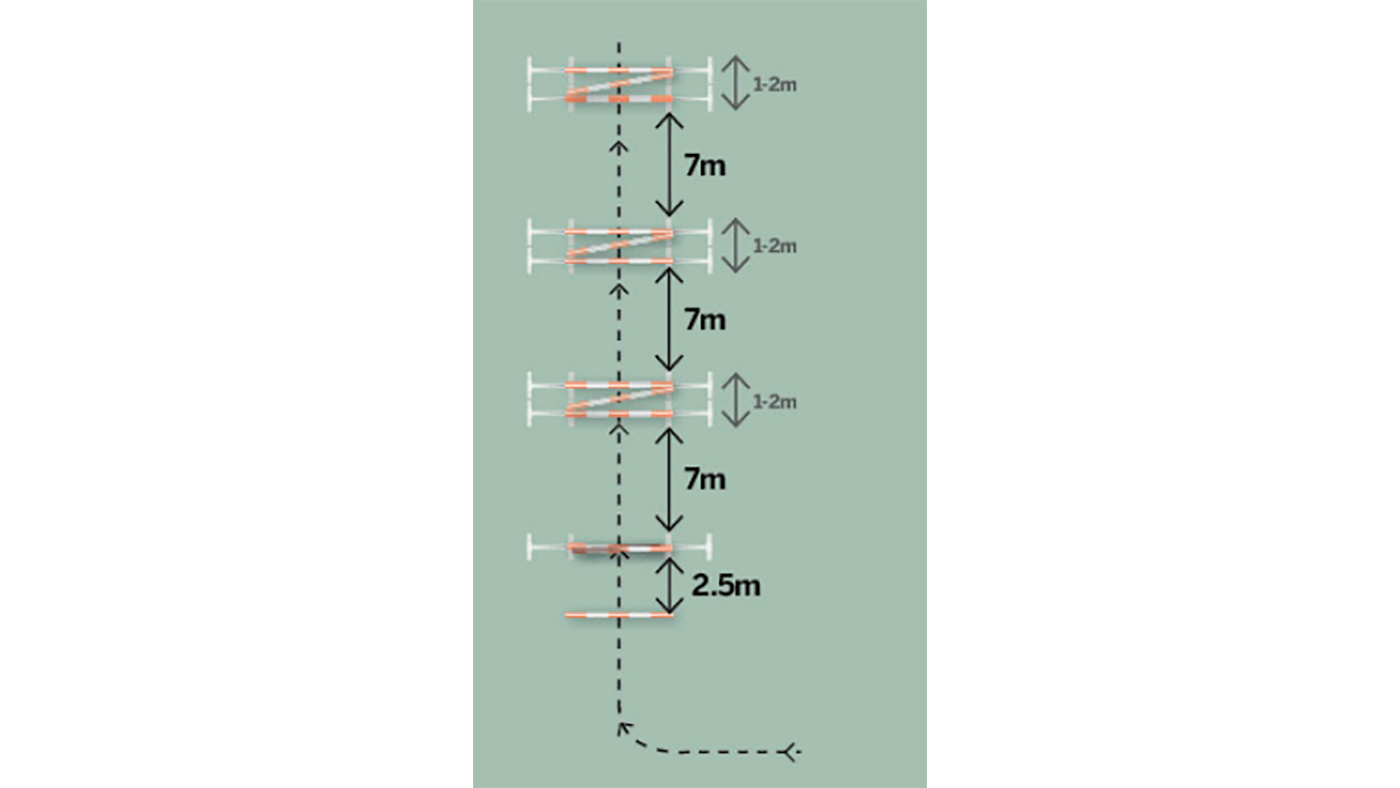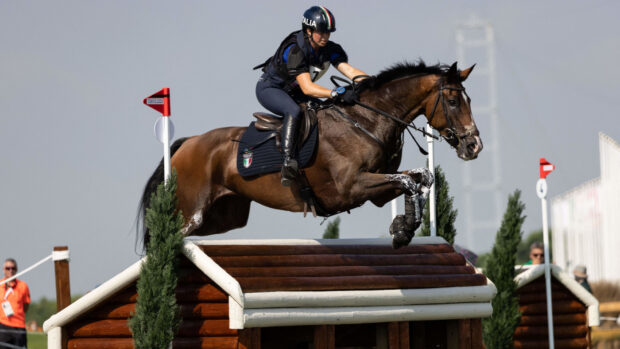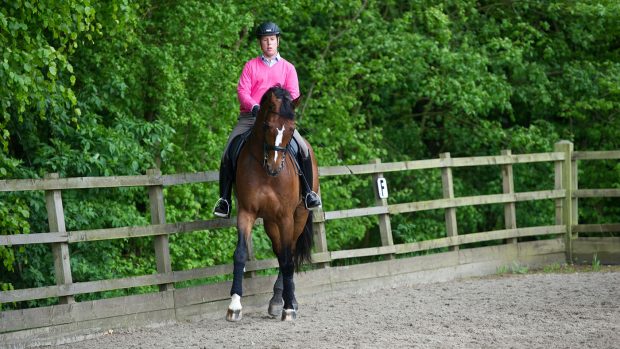Event rider Vittoria has been a stalwart of senior Italian teams since 2005. She has contested two Olympic Games, finishing 11th at London 2012 with Borough Pennyz. Based in Redmarley D’Abitot, Glos, she is a former junior European champion who has lived in England since she was 17.
Training the stars
Merlots Magic benefited from this exercise as he needed to strengthen behind and develop more “push”. Chequers Play The Game was encouraged to make a better shape over a fence and I always used diagonal poles placed on top of the fence to encourage him to be rounder.
I use this exercise regularly with most of my horses, but I’ve always been cautious with Borough Pennyz (pictured). She was born with an amazing jump and if she overjumped doing an exercise like this, she would get into trouble.
This exercise — consisting ultimately of a cross-pole to three wide parallels jumped in trot — is multi-faceted. The brainchild of Sarah Bullen, it helps a horse who isn’t making a good shape over a fence to make their bascule rounder. It improves their “push” from behind, encourages the horse to sit back, “punch” and pick up. It will make those who rush back off, and teaches them how to look after themselves. The grid can also help to enhance a rider’s balance.
Tackling the issue

1. Set up a small cross-pole with a trot-pole preceding it at a 2.5m distance. Approach in trot and repeat until the horse is jumping through calmly.
2. Add in the other elements of the grid one at a time, always with a groundline in front. Next is an upright — the front part of the first parallel — placed about 7m from the cross-pole. Then the back rail, and so on, until there is three parallels to jump, initially with about 7m between each fence.
3. You don’t want the parallels too high (90cm-1m is ample), but they should be widened by 5-10cm each time, up to almost 2m for experienced horses. Consequently, the striding between them will shorten — to closer to 6m than the original 7m. Add in diagonal poles as the parallels widen to encourage the horse to make a rounder shape.
4. Jump through each altered grid once or twice. Don’t hang around between each approach as you don’t want the horse to switch off. To get the horse really lifting his shoulders, I sometimes change the final parallel into an upright.
Article continues below…
You might also be interested in:

#SundaySchool: Jumping a horse on an angle with Francis Whittington
This simple exercise provides a solid foundation for skinnies and arrowheads to help you when jumping a horse on an

Sarah Bullimore’s figure-of-eight jumping exercise for focus
The five-star eventer shows how the figure-of-eight jumping exercise can help develop balance, rhythm and the ability to land on

Subscribe to Horse & Hound magazine today – and enjoy unlimited website access all year round
Consider this…
- Inexperienced riders tend to hang on to the horse’s mouth, but avoid doing this as the horse must be free to use their neck.
- The rider should lower his hands to move with the horse’s mouth, and stay folded and in balance, with their leg in the correct position. Don’t sit back on the saddle.
- Jumping the initial grids before widening with a light contact is the best way to check ideal rider balance.
- Ensure the horse jumps sharply over the cross-pole or you will struggle to make it through the rest.
- If the horse is finding it too easy, shorten the overall striding.
Would you like to read Horse & Hound’s independent journalism without any adverts? Join Horse & Hound Plus today and you can read all articles on HorseandHound.co.uk completely ad-free.




